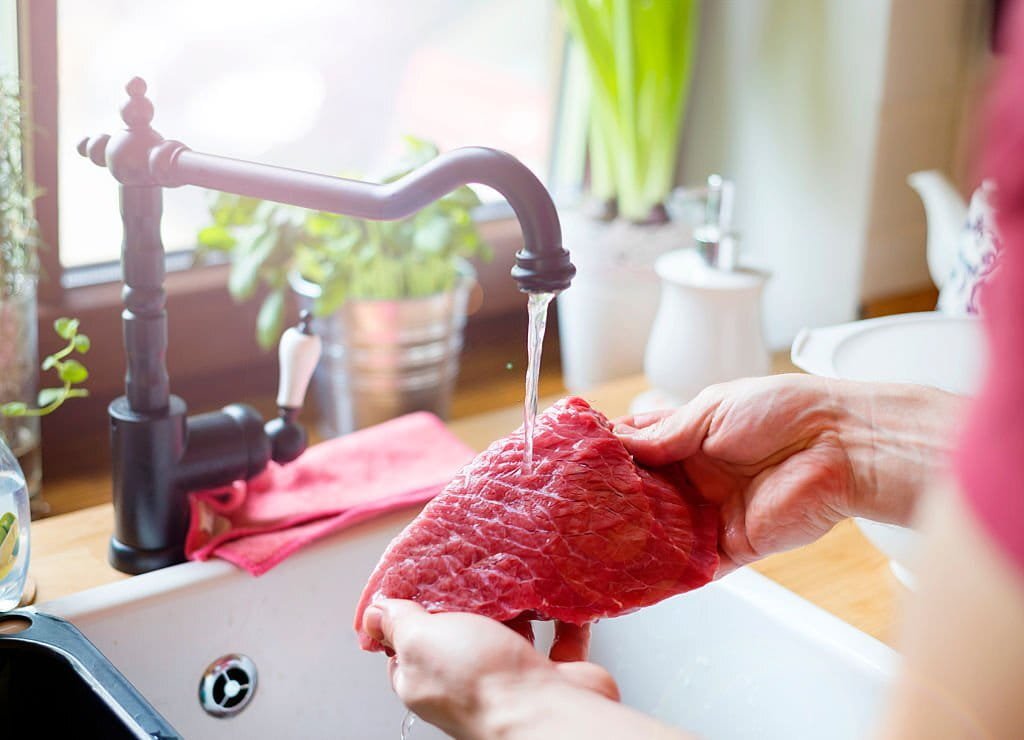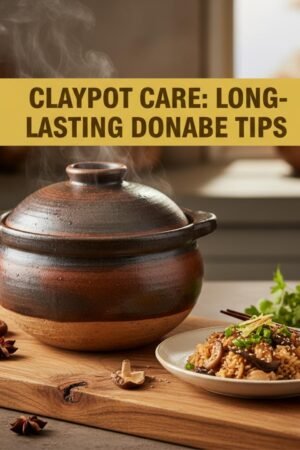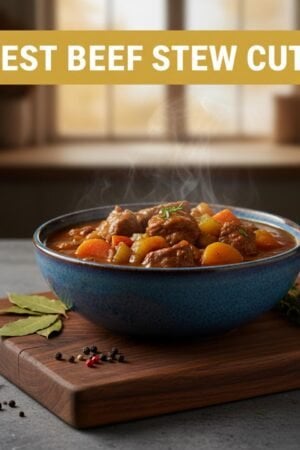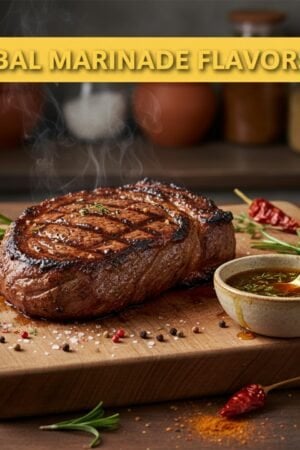Do chefs wash meat before cooking? This is a question many people are curious about.
After all, isn’t it hygienic and practical to wash everything before you cook it?
Maybe you want to make some barbecue but first, you would like to wash that meat first prior to cooking.
Once you have unwrapped the meat from the store, you may be tempted to give it a little rinse first. But according to the Food Safety and Inspection Service by the USDA, it is not ideal to rinse raw meat before cooking.
There are also some undesirable effects that come with washing your meat, which is what we will discuss today in this post. So let’s dive right into it.

Do Chefs Wash Meat Before Cooking?
The answer is a big no.
Rinsing your raw meat only causes more harm than good. For instance, there is a likelihood of cross-contamination happening in your kitchen. Thus, this increases the chances of food-borne diseases.
As an example, washing your packaged raw meat does not at all minimize the risk of bacteria. In fact, it can make you more prone to food poisoning. Raw meat has bad bacteria growing on it such as listeria, E.coli, and salmonella, to name a few. So anything that your meat comes into contact with while raw ends up being contaminated with the bacteria.
Thus, when you wash meat under the sink, water tends to carry some pathogens to the basin, as well. This is why if you want to eliminate those nasty bacteria in your meat, the best thing to do is to cook it properly. Otherwise, it would not be safe to eat it.
As for your kitchen tools such as your knife, cutting board, and utensils, these need to be washed with hot and soapy water. Then, give them a rinse and then dry with a paper towel.
Additionally, rinsing meat is a bad idea since you want to keep the excess moisture on the surface of the meat. This prevents the Maillard reaction or when those carbohydrate molecules create a reaction with amino acids. Thus, this results in the lovely sear on your meats and steak.
Generally, this Maillard reaction happens at about 285 degrees Fahrenheit. Once water turns to vapor, this may not be enough heat to generate the Maillard reaction. This is why if you have watery raw meat, it will not brown at all until the water has been cooked off completely.
It is also worth noting that soaking your meat in salt water may add flavor, but it is not exactly anything necessary for food safety purposes. This is why it is more like a waste of time to soak your meat in plain water or salt water.
If you do want to give the meat a bit of a bath prior to cooking, as stated in the recipe, then the best thing to do is to simply leave it in the refrigerator until it is time to cook. By doing this, you can reduce the chances of cross-contamination.
Plus, if you follow a low-sodium diet, there is nothing good that comes out of soaking your salt pork, bacon or ham. You are not removing much salt by washing the meat or soaking it. And most importantly, it is not recommended by the USDA.
Acidic solutions such as lemon juice and vinegar also aid in reducing the amount of bacteria there is on raw meat. However, there is no clarity on whether this can indeed eliminate viruses that are food-borne. The best way to go about it is to cook meat at the right internal temperature to get rid of harmful bacteria.
We cannot stress enough the danger of cross contamination in cooking. Washing your meat is not the only means to this issue. You also need to make sure that your hands are washed well after touching raw meat. This means washing your hands with soap and then warm water for 20 seconds.
Otherwise, unwanted germs can remain and even thrive on your kitchen tools, hands, countertops, and anything else that the meat touched.
Additionally, you need to separate your raw meat from your other food items during storage and preparation. When shopping and storing the meat in your refrigerator, make sure that raw meat is far away from foods you are not planning on cooking such as fruits and greens.
It is also ideal to have separate cutting boards for cooked and raw foods. Avoid putting your cooked foods on a plate you have not washed yet after placing raw meat on it. Then, if you have leftover meat, you need to freeze or chill this within 2 hours. Even if you are planning on eating it the same day, you should never keep it at room temperature since food poisoning-causing bacteria tend to multiply at a much quicker rate between 40 and 140 degrees Fahrenheit.
But if you keep the meat in the freezer, this prevents bacteria growth and make sure it is still safe and good to eat.
Storage is just one thing but cooking is another. You should cook the meat at the ideal temperature to eliminate harmful bacteria. For beef steaks, lamb and pork, you should cook these at 145 degrees Fahrenheit. For poultry, it is at 165, and for fish, it is 145. Using a food thermometer is key to achieving the optimal temperature for cooking. You can then be sure that the meat is not overcooked or undercooked.
Summary
Overall, chefs do not wash meat before cooking. This is an unsafe practice since rinsing meat prior to cooking can cause cross-contamination in the kitchen and a high risk of food poisoning due to bacteria on anything raw meat touches. The best way to kill bacteria is to cook your raw meat well and be sure to use a food thermometer to accurately check the temperature.






